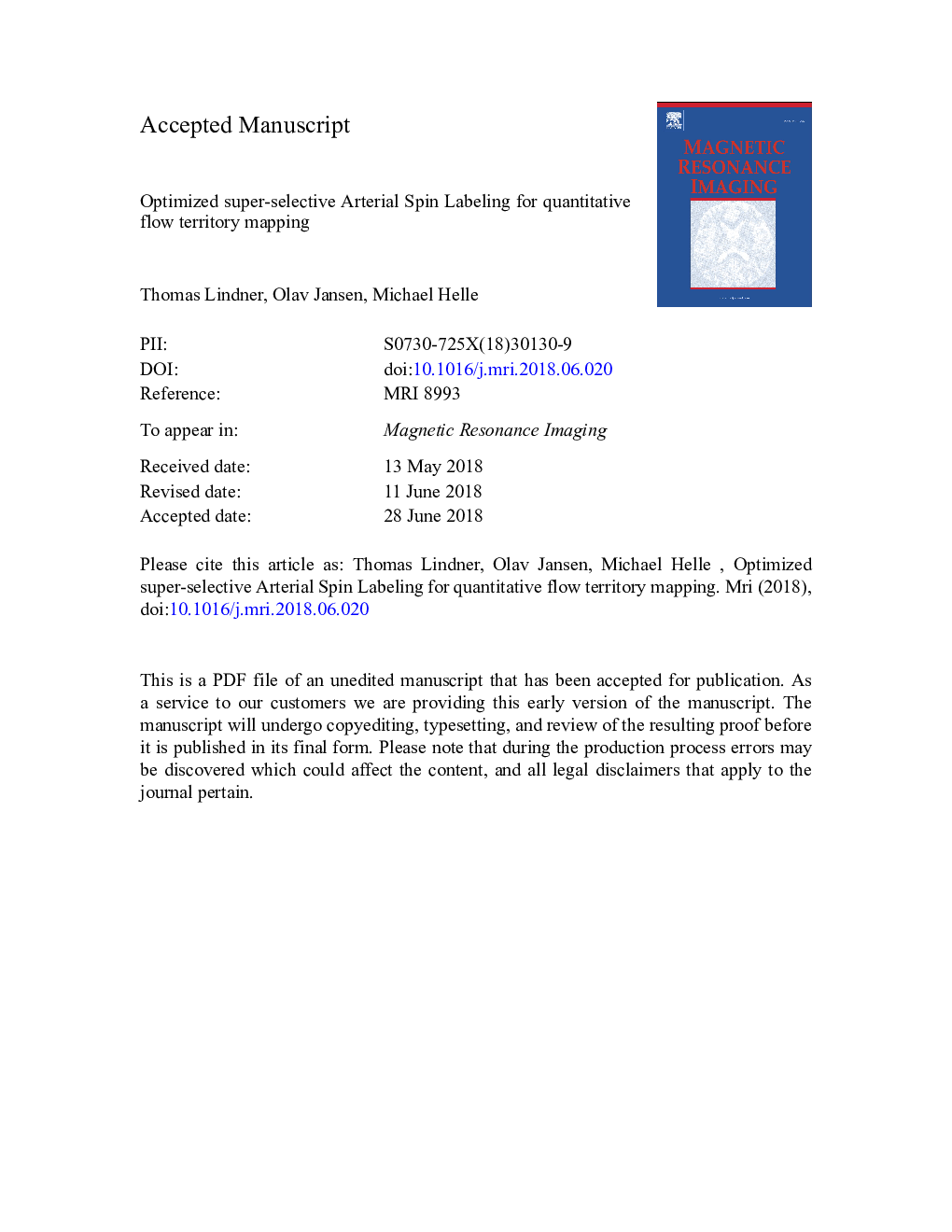| Article ID | Journal | Published Year | Pages | File Type |
|---|---|---|---|---|
| 8159725 | Magnetic Resonance Imaging | 2018 | 16 Pages |
Abstract
Flow territory mapping using Arterial Spin Labeling (ASL) methods allows for deeper insights into the physiology of the brain. However, in most approaches assumptions of the labeling efficiency are used for calculation of brain perfusion which might result in inaccuracies. This becomes more important in super-selective ASL as the labeling focus could be positioned not exactly at the artery of interest. Therefore, measuring the labeling efficiency of the current scan seems important to obtain reliable results and to correct for potential errors. In this study, an optimized super-selective ASL tagging scheme is presented and the labeling efficiency is measured using quantitative phase-contrast angiography of the tagged artery and considering the volume of the supplied flow territory. The aim then is to evaluate the labeling efficiency of super-selective ASL and considering these values when shifting the labeling spot away from the artery of interest. The measured efficiency is compared to simulations performed for the optimized super-selective ASL approach. Considering the values of labeling efficiency after shifting the labeling focus, the values of cerebral blood flow still show accurate results despite the expected lower SNR up to an offset of 3â¯mm. Following this, to obtain accurate results for quantifying super-selective ASL perfusion images, measuring the labeling efficiency seems necessary to prevent false results.
Keywords
Related Topics
Physical Sciences and Engineering
Physics and Astronomy
Condensed Matter Physics
Authors
Thomas Lindner, Olav Jansen, Michael Helle,
